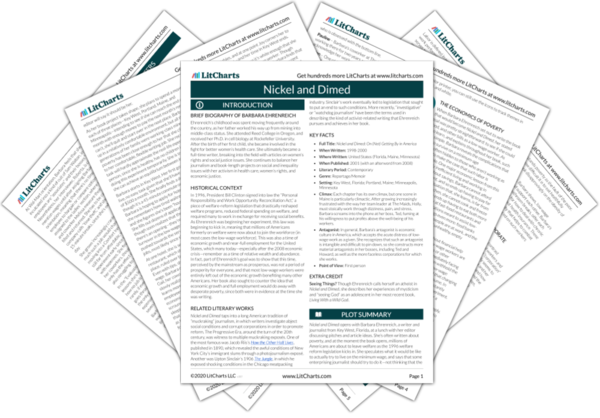Next
Summary
Nickel and Dimed Study Guide |
Next
Summary
|
Welcome to the LitCharts study guide on Barbara Ehrenreich's Nickel and Dimed. Created by the original team behind SparkNotes, LitCharts are the world's best literature guides.

Seeing Things? Though Ehrenreich calls herself an atheist in Nickel and Dimed, she describes her experiences of mysticism and “seeing God” as an adolescent in her most recent book, Living With a Wild God.